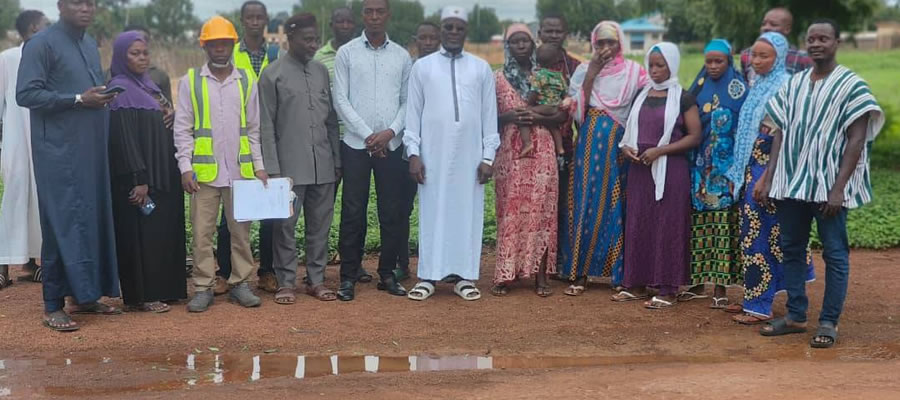

Location
The District lies between latitudes 9° 15'` and 10°0 02` North and Longitudes 0° 53'and 1° 25' West. It shares boundaries to the North with Kumbungu, North Gonja to the West, Central Gonja to the South, and Sagnarigu Districts to the East.
Rainfall
The district is characterised by a single rainy season, which starts in late April with little rainfall, rising to its peak in July-August and declining sharply and coming to a complete halt in October-November. The dry season starts from November to March with day temperatures ranging from 33°C to 39°C, while mean night temperature range from 20°C to 26°C. The Mean annual rainfall ranges between 950mm - 1,200mm. The area experiences occasional storms, which have implications for base soil erosion depending on its frequency and intensity especially when they occur at the end of the dry season. The situation also has an implication as staple crop farming for instance is highly restricted by the short rainfall duration.
Vegetation
The main vegetation is grassland, interspersed with guinea savannah woodland, characterised by drought-resistant trees such as acacia, (Acacia longifolia), mango (Mangifera), baobab (Adansonia digitata Linn), shea nut (Vitellaria paradoxa), dawadawa, and neem (Azadirachta indica). Major tree species include the sheanut, dawadawa, and mango, which are economic trees and form an integral part of livelihood of its people. There is also the neem which mostly has some medicinal use. The dense woodlands and forests along river valleys (especially areas along the basin of the White Volta and its tributaries) is gradually beginning to change due to the influx of people. The vegetation is also annually affected by bush fires, which sweep across the savannah woodland. There is therefore the need for education and stringent measures to reduce the bush-fires.
Topography and Drainage
Generally, the land is undulating with a number of scattered depressions. There are no marked high elevations throughout the district. The land is drained by a number of rivers and streams, most prominent being the White Volta. Among the major tributaries of the White Volta are Kulabong, Koraba, Salo, Bawa and Winibo. The major river and its tributaries exhibit dendrite drainage patterns. Most of these tributaries dry up during the dry season. Besides, there exist smaller dams and dug-out in some communities in the District.
Soil
The soil is generally of the sandy loam type except in the low lands where alluvial deposits are found. There are also deposits of gravel which are sold for economic value. The nature of the soil makes it highly vulnerable to sheet and gully erosion. This condition happens primarily because of the perennial burning of the natural vegetation, leaving the soils exposed to high weather intensity. The continuous erosion over many years has removed most of the top soils and depleted its organic matter content. This situation does not allow the soil fauna to thrive, leading to low agricultural yields.
Date Created : 11/30/2017 7:32:35 AM






 facebook
facebook
 twitter
twitter
 Youtube
Youtube
 +233 593 831 280
+233 593 831 280 0800 430 430
0800 430 430 GPS: GE-231-4383
GPS: GE-231-4383 info@ghanadistricts.com
info@ghanadistricts.com Box GP1044, Accra, Ghana
Box GP1044, Accra, Ghana